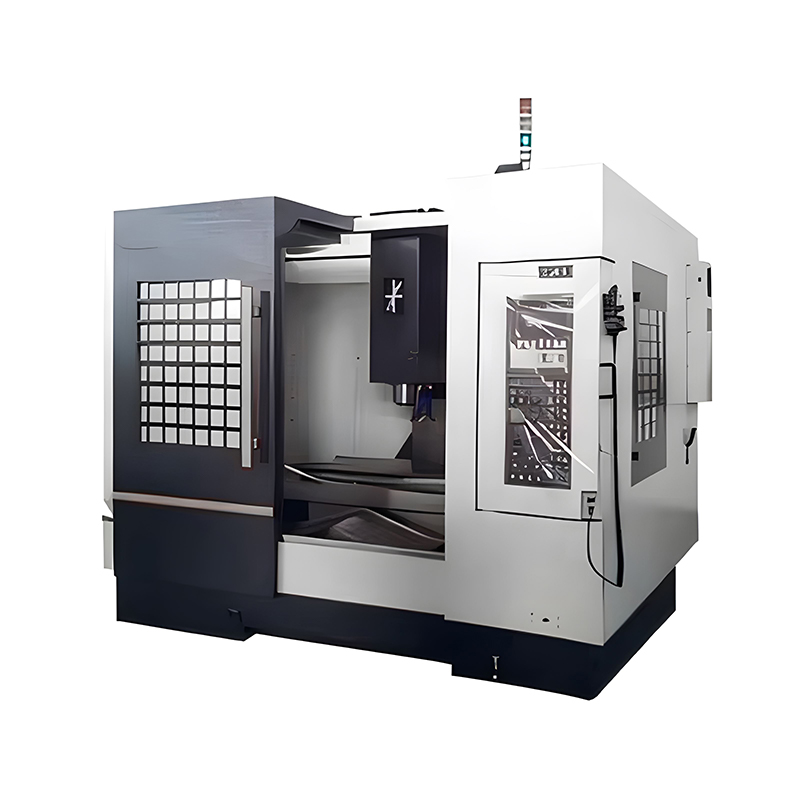In modern manufacturing, CNC Vertical Machining Centers are key pieces of technical equipment, their multi-axis configurations directly determining machining efficiency and precision. Comparing 3-Axis and 5-Axis systems, in particular, involves numerous specialized knowledge points. Understanding the fundamental principles, advantages, and differences between these systems, as well as their integration into industrial practice, is crucial. This not only guides equipment selection but also reveals how leading manufacturers like Nantong Sunway Science and Technology Development Co., Ltd. continuously build upon their experience and expertise to advance process optimization, intelligent control, and customization, ultimately striving to become a trusted, long-term partner for their customers.
How does a 3-Axis CNC Vertical Machining Center work?
A 3-Axis system is based on a linear coordinate motion mechanism, typically involving a combination of X, Y, and Z axes. These axes represent horizontal, vertical, and depth movement paths, allowing the tool to perform milling, drilling, or cutting tasks on a fixed worktable. This system is suitable for machining relatively simple parts and can be automated through programmable control. Its core advantages lie in its ease of operation and cost-effectiveness, making it particularly well-suited for the production of high-volume standardized parts. In industrial applications, this configuration emphasizes fundamental precision and repeatability, requiring manufacturers to prioritize rigid structures during equipment design and maintenance to minimize vibration. Companies like Nantong Sunway Science and Technology Development Co., Ltd. continuously optimize the process parameters of these systems through accumulated experience to ensure high-quality output.
What are the expandable capabilities of the 5-Axis CNC Vertical Machining Center?
A 5-Axis system builds upon a 3-Axis system by introducing additional rotary axes, typically including A and B axes or a similar combination. These rotary axes allow the tool or worktable to tilt and rotate in multiple directions, enabling the machining of complex curved surfaces without re-clamping the workpiece. This significantly enhances machining flexibility and is suitable for the manufacture of high-precision, multi-dimensional parts such as turbine blades or mold components. Key knowledge involves dynamic design, where synchronized control of multiple axes is crucial to avoid interference and ensure surface finish. 5-Axis technology emphasizes the integration of intelligent control systems, which adjust cutting paths through real-time feedback, reducing manual intervention and improving efficiency. Nantong Sunway Science and Technology Development Co., Ltd.'s investment in intelligent control demonstrates how this system's reliability is enhanced through accumulated expertise.
What are the core differences and application scenarios between 3-Axis and 5-Axis systems?
The primary distinctions between the two lie in the number of degrees of freedom and machining complexity. While 3-Axis systems are limited to flat or simple three-dimensional machining, 5-Axis systems extend to full-angle operation, enabling multi-surface machining in a single setup. This directly impacts production cycle time and cost: 5-Axis systems reduce workpiece repositioning, lower setup time, and increase productivity, but they require a higher initial investment and programming complexity. Application scenario analysis reveals that 3-Axis systems are more suitable for rigid components in mass production, while 5-Axis systems offer advantages in aerospace, medical devices, or precision engineering, addressing the needs of special-shaped or micro-sized parts. Nantong Sunway Science and Technology Development Co., Ltd.'s focus on customization supports this scenario adaptation, providing expertise to help users select the optimal configuration.
What is the importance of process optimization in CNC machining?
Process optimization is a core pillar of multi-axis CNC systems, involving the fine-tuning of cutting parameters, toolpaths, and material handling. The optimization process aims to maximize material removal rate while minimizing tool wear, ensuring machining accuracy and surface quality. This requires continuous monitoring and iteration, such as using simulation software to predict potential problems or optimize feed strategies. In manufacturing practice, optimization not only extends equipment life but also reduces energy consumption and scrap rates. Nantong Sunway Science and Technology Development Co., Ltd. emphasizes the continuous accumulation of experience and expertise, as reflected in its investment in process optimization, building a reliable product foundation.
What are the integration and applications of intelligent control technologies?
Intelligent control is the driving force behind multi-axis CNC systems and encompasses sensor networks, algorithm-driven processes, and adaptive feedback mechanisms. These technologies monitor machining conditions in real time, automatically compensate for thermal deformation or vibration errors, and maintain high-precision output. This is particularly critical in 5-axis systems, as the motion of rotary axes increases dynamic complexity. Intelligent control also supports remote monitoring and predictive maintenance, reducing downtime and improving overall production efficiency. Nantong Sunway Science and Technology Development Co., Ltd.'s dedicated investment in this area has enhanced the reliability of its equipment in demanding industrial environments, in line with its vision of becoming a long-term partner.
What is the strategic value of customization?
Customization is a core advantage of multi-axis CNC solutions, allowing equipment configuration to be tailored to specific application requirements. This includes customizing fixtures, software interfaces, or motion control logic to accommodate standards across various industries, such as automotive prototyping or electronic component production. Customization emphasizes flexibility and responsiveness, requiring manufacturers to possess deep expertise in balancing performance and cost. Nantong Sunway Science and Technology Development Co., Ltd.'s investment in customer customization highlights how accumulated experience can deliver tailored solutions, helping users enhance their competitiveness.
What are the long-term impacts of a comprehensive manufacturing partnership?
When selecting a multi-axis CNC system, long-term supplier support is crucial. This involves ongoing technical upgrades, training services, and maintenance guarantees to ensure high performance throughout the equipment's lifecycle. The evolution of 3-axis and 5-axis technology relies on manufacturers' expertise in process, control, and customization. Nantong Sunway Science and Technology Development Co., Ltd.'s future investments—focused on process optimization, intelligent control, and customer customization—embody this philosophy, aiming to drive overall advancement in the manufacturing industry through reliable partnerships.
 VIEW MORE
VMC850L High Speed 3 Axis CNC Vertical Machining Center
The VMC850L High-Speed 3-Axis CNC Vertical Machining Center is a high-performance milling machine de...
VIEW MORE
VMC850L High Speed 3 Axis CNC Vertical Machining Center
The VMC850L High-Speed 3-Axis CNC Vertical Machining Center is a high-performance milling machine de...



 русский
русский Español
Español





